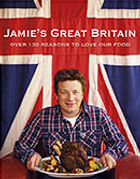- Healthy recipes
- Healthy snacks
- Healthy lunches
- Healthy chicken recipes
- Healthy fish recipes
- Healthy vegetarian recipes
- Main Ingredient
- Chicken
- Pasta
- Vegetables
- Fish
- Beef
- Eggs
- View more…
- Special Diets
- Vegan
- Vegetarian ideas
- Gluten-free
- Dairy-free
- Budget recipes
- One-pan recipes
- Meals for one
- Breakfast
- Desserts
- Quick fixes
- View more…
- Baking recipes
- Cakes
- Biscuit recipes
- Gluten-free bakes
- View more…
- Family recipes
- Money saving recipes
- Cooking with kids
- School night suppers
- Batch cooking
- View more…
- Special occasions
- Dinner party recipes
- Sunday roast recipes
- Dinner recipes for two
- View more…
- 5 Ingredients Mediterranean
- ONE
- Jamie’s Keep Cooking Family Favourites
- 7 Ways
- Veg
- View more…
- Nutrition
- Features
- Cheap eats
- Healthy meals
- Air-fryer recipes
- Family cooking
- Quick fixes
- View more
- How to’s
- How to cook with frozen veg
- How to make the most of your oven
- How to make meals veggie or vegan
- View more
- More Jamie Oliver
- YesChef x Jamie Oliver
- Cookbook Club
- Jamie Oliver Group website
- Jamie Oliver Cookery School
- Ministry of Food
- Vegepedia
Crumbliest scones
A traditional tasty teatime treat
- Vegetarianv

A traditional tasty teatime treat
“Scones are wonderfully British, delicious, and so simple even a five-year-old could make them. There’s a magic hour just after they come out of the oven when they are so heavenly I just can't imagine why anyone would prefer store-bought scones. Just remember that the less you touch the dough, the shorter and crumblier your scones will be. Get baking! ”
Makes 16 to 20
Cooks In35 minutes
DifficultySuper easy
Jamie's Great BritainFruitAfternoon teaEaster treatsFather's dayMother's day
Nutrition per serving
-
Calories 219 11%
-
Fat 9.1g 13%
-
Saturates 4.9g 25%
-
Sugars 8.6g 10%
-
Salt 0.6g 10%
-
Protein 4.2g 8%
-
Carbs 32.1g 12%
-
Fibre 1.3g -
Of an adult's reference intake
Tap For Method
Ingredients
- 150 g dried fruit, such as sour cherries, raisins, sultanas, chopped sour apricots, blueberries, or a mixture
- orange juice , for soaking
- 150 g cold unsalted butter
- 500 g self-raising flour , plus a little extra for dusting
- 2 level teaspoons baking powder
- 2 heaped teaspoons golden caster sugar
- 2 large eggs
- 4 tablespoons milk , plus a little extra for brushing
- optional:
- Jersey clotted cream, good-quality jam or lemon curd , to serve
Tap For Method
The cost per serving below is generated by Whisk.com and is based on costs in individual supermarkets. For more information about how we calculate costs per serving read our FAQS
Tap For Ingredients
Method
- First and foremost, brilliant scones are about having the confidence to do as little as possible, so do what I say and they’ll be really great; and the second and third time you make them you'll get the dough into a solid mass even quicker, even better.
- Put the dried fruit into a bowl and pour over just enough orange juice to cover. Ideally, leave it for a couple of hours. Preheat the oven to 200°C/400°F/gas 6.
- Put your butter, flour, baking powder, sugar and a good pinch of sea salt into a mixing bowl and use your thumbs and forefingers to break up the butter and rub it into the flour so you get little cornflake-sized pieces. Make a well in the middle of the dough, add the eggs and milk, and stir it up with a spatula.
- Drain your soaked fruit and add that to the mixture. Add a tiny splash of milk if needed, until you have a soft, dry dough. Move it around as little as possible to get it looking like a scruffy mass – at this point, you’re done. Sprinkle over some flour, cover the bowl with clingfilm and pop it into the fridge for 15 minutes.
- Roll the dough out on a lightly floured surface until it’s about 2 to 3cm thick. With a 6cm round cutter or the rim of a glass, cut out circles from the dough and place them upside down on a baking sheet – they will rise better that way (so they say). Re-roll any offcuts to use up the dough.
- Brush the top of each scone with the extra milk or some melted butter and bake in the oven for 12 to 15 minutes, or until risen and golden. At that point, take them out of the oven and leave them to cool down a little.
- Serve with clotted cream and a little jam or lemon curd.
Tips
If you don’t want to bake a whole batch, freeze the scones after you’ve cut them out. That way, another day you can just pop the little rounds of frozen dough into the oven and cook them at 180°C/350°F/gas 4 for 25 minutes, or until golden and lovely.
Related recipe
December scones
Related features
Easy fruit crumble recipes
10 sweet raspberry recipes
Summer recipes for Wimbledon
Related video
How to make scones: Jamie Oliver
© 2024 Jamie Oliver Enterprises Limited
- Terms of Use
- Privacy Policy
- Cookies
- Jamie Oliver Group
- Contact
- Sitemap
© 2024 Jamie Oliver Enterprises Limited
